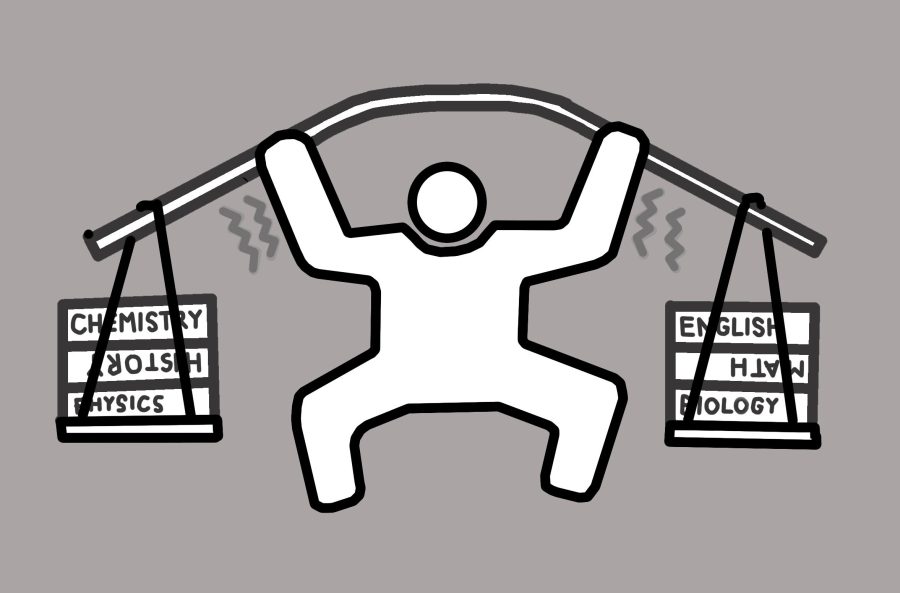Here’s a fact: everybody hates textbooks. They’re bulky and heavy, take up precious space in your room and actively worsen your day whenever you have to transport them to get your work done.
Your teachers know this, but they still assign a few problems on a few pages in a textbook consisting of thousands of pages, forcing you to lug around a 10-pound book just to finish your homework.
Still, all of us trudge home, hoist our giant textbooks up onto our desks and get to work. Those of us who are night owls suffer tremendously — you need fantastic lighting to read the text comfortably and half the time, the information in the textbook doesn’t even help that much. It can easily be found elsewhere. The information-to-weight ratio is absolutely dismal.
Online textbooks (the real versions, not the badly-scanned illegal versions) are light, functional and accessible almost anywhere, boosting productivity.
They have an embedded table of contents with handy links to the specific chapters, streamlining the tedious process of tracking page numbers for your chapter. You can adjust the brightness of your screen and zoom in on certain graphics—features that do not exist in the heavy paper versions.
These official online textbooks, purchased alongside the real paper textbooks, are properly formatted and fit to a laptop or phone screen, so students can find whatever section they’re looking for.
Online textbooks also allow you to use the handy Ctrl-F function to search for key terms without poring over paragraphs of heavy text. They’re easier on your eyes, your body and your brain. What’s not to like?
They are, in essentially every single way, functionally superior to the hard-copy version of textbooks.
The problems with textbooks are exacerbated for students with far-away after-school obligations. If you have no time in between school and a sports meet or tournament, not only do you have to heave your textbook to your commitment just to get your work done, you also have to schlep it around school all day, from class to class, along with the rest of your heavy belongings.
In addition to being a physical burden, textbooks can also be an economic burden, since these useless masses of paper loaned out by the school costs hundreds of dollars to repair or replace if damaged or lost.
The question must have crossed your mind: Why don’t we have access to online versions of textbooks?
All of these textbooks have a free online PDF version that can be found with a few keystrokes in Google. In that case, you still have to scroll through thousands of pages to find your problem set or your homework to take notes on.
We wouldn’t have to deal with these substitutes for the real online textbooks had our school district provided the real versions to us.
Some teachers don’t post these online textbooks on Schoology, even when their entire department has access to these official online textbook versions.
It takes little time out of their day to post it on Schoology — and they just don’t make the effort.
Some may bring up the fact that not all textbooks bought by the District come with online versions, which, to be fair, is entirely true.
However, if we can afford our hundred-dollar textbooks, shouldn’t we provide the best possible materials for our students to use?
Instead of spending thousands of dollars annually updating hard-copy textbooks, maybe the Palo Alto Unified School District should think about purchasing the superior version instead: the online version.

